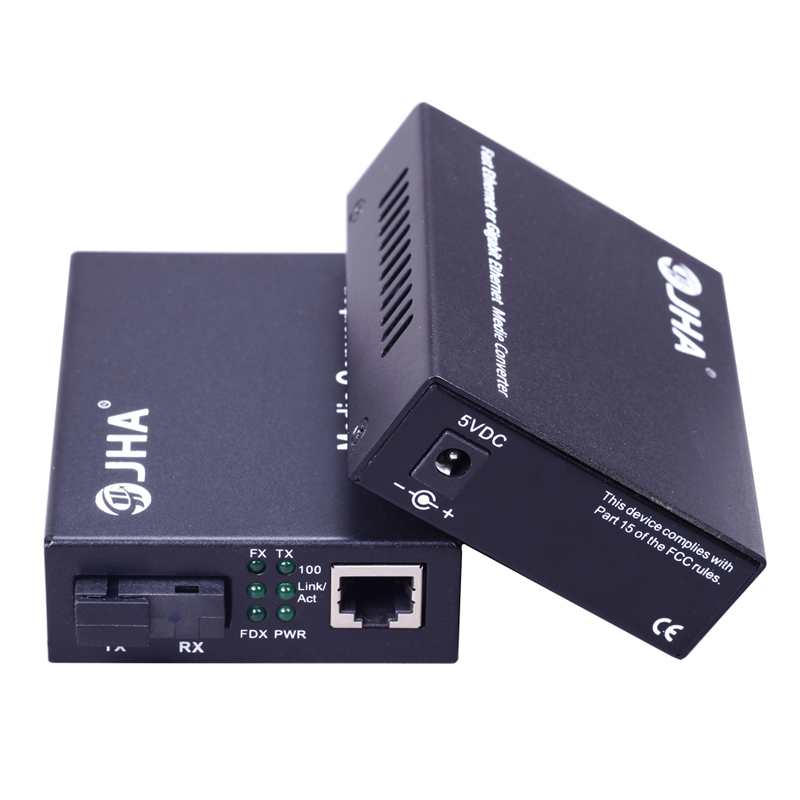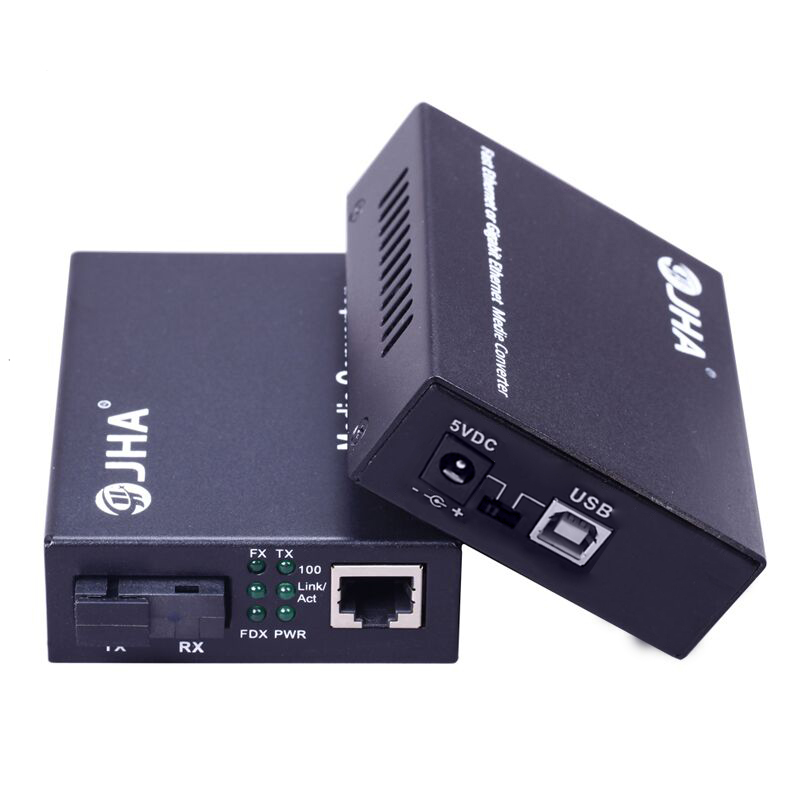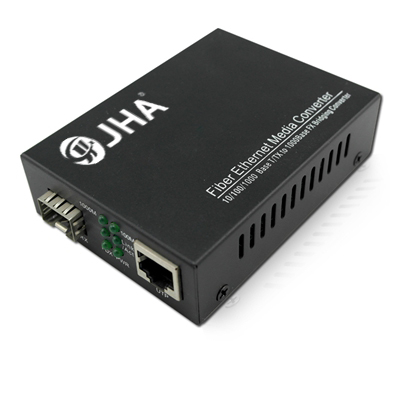Problems encountered in the installation and use of fiber optic transceivers
Step 1: First, do you see if the indicator of the fiber transceiver or optical module and the twisted pair port indicator are on?
1.If the optical port (FX) indicator of the A transceiver is on and the optical port (FX) indicator of the B transceiver is not lit, the fault is on the A transceiver side: one possibility is: A transceiver (TX) optical transmission The port is broken because the optical port (RX) of the B transceiver does not receive an optical signal.Another possibility is that there is a problem with this fiber link of the A transceiver (TX) optical port, such as the light jumper is broken.
2.If the optical port (FX) indicator of the transceiver does not illuminate, determine if the fiber link is cross-linked. The fiber jumper is connected in parallel and the other is a cross-connect.
3.The twisted pair (TP) indicator does not light. Please make sure that the twisted pair cable is faulty or connected incorrectly. Please use the continuity tester to check.(However, some transceivers’ twisted pair indicators must wait until the fiber link is turned on).
4.Some transceivers have two RJ45 ports: (ToHUB) indicates that the connection line connecting the switches is a straight-through line. (ToNode) indicates that the connection line connecting the switches is a cross-line.
5.Some transmitters have an MPR switch on the side: the connection line connecting the switches is a straight-through line mode.The DTE switch: the connection line connecting the switches is a cross-line mode.
Step 2: Analyze whether there is a problem with the fiber jumper and cable?
1.Optical fiber connection on-off detection: use laser flashlight, sunlight, etc. to illuminate the fiber jumper.See if there is visible light on the other end? If there is visible light, the fiber jumper is not broken.
2.Cable break detection: use laser flashlight, sunlight, illuminator to illuminate the cable connector or coupler.See if there is visible light on the other end? If there is visible light, the cable is not broken.
Step 3: Is the half/full duplex method wrong?
Some transceivers have FDX switches on the side: full duplex; HDX switches: half duplex.
Step 4: Using optical power meter instrument detection
The luminous power of the optical transceiver or optical module under normal conditions: multimode: -10db–18db; single mode 20km: -8db–15db; single mode 60km: -5db–12db If the luminous power of the optical transceiver is between -30db–45db, then it can be judged that there is a problem with this transceiver.
Optical transceivers should pay attention to matters
For the sake of simplicity, it is better to have a question and answer style, which can be achieved at a glance.
1.Does the optical transceiver itself support full-duplex and half-duplex?
Some chips on the market can only use full-duplex environment at present, and can’t support half-duplex. If you connect to other brands of switches (SWITCH) or hub (HUB), and it uses half-duplex mode, it will definitely cause Serious conflicts and packet loss.
2.Has it been tested for connectivity with other fiber optic transceivers?
At present, there are more and more optical transceivers on the market. For example, if the compatibility of different brands of transceivers has not been tested before, it will also result in packet loss, long transmission time, and rapid and slow.
3.Is there a safety device to prevent packet loss?
Some manufacturers use register data transfer mode in order to reduce costs when manufacturing fiber optic transceivers.The biggest disadvantage of this method is that the transmission is unstable and packet loss, and the best is to use the buffer line design, which can safely avoid data packet loss.
4.Temperature adaptability?
When the fiber optic transceiver itself is used, it will generate high heat. When the temperature is too high (not more than 50 °C), whether the fiber optic transceiver works normally is a factor worth considering by customers!
5.Is there an IEEE802.3u standard?
If the optical transceiver meets the IEEE802.3 standard, that is, the delaytime is controlled at 46 bits. If it exceeds 46 bits, the distance transmitted by the optical transceiver will be shortened.
6.After-sales service:
In order to make the after-sales service respond promptly and early, it is recommended that customers purchase fiber-optic transceivers according to the strength of the manufacturer, technology, reputation and other companies.
Post time: Jul-13-2020








